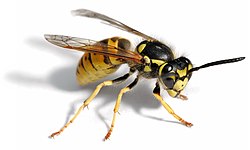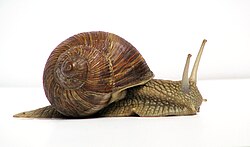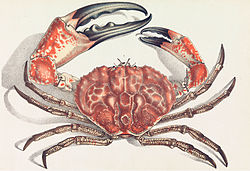Invertebrate
(Redirected from Invertebrates)
An invertebrate is an animal that does not have a spinal column or backbone. This contrasts with vertebrate: if an animal is not a vertebrate (fish, reptile, amphibian, bird, or mammal), it is an invertebrate. Most animals, and most species of animal, are invertebrates.
The main phyla (groups) of invertebrate animals are:
- Annelida: segmented worms
- Arthropods: (arachnids, crustaceans, insects, and others); the largest groups of invertebrates.
- Brachiopods: the lamp-shells.
- Bryozoa: sea mats or moss animals (sometimes they look like corals)
- Cnidarians: jellyfish, sea anemones, hydroids.
- Echinoderms: starfish, sea urchins, sea cucumbers
- Molluscs: (gastropods, cephalopods, bivalves and others); a large group of invertebrates.
- Nematoda: roundworms
- Porifera: sponges
- Platyhelminthes: flatworms
- Rotifers: tiny "wheel animals", which live in habitats such as pond water.
Insects and other arthropods have no bones, but they have a skeleton on the outside of their bodies, called an exoskeleton.
There are 18 more groups of invertebrates, mostly minor: see List of animal phyla.
Invertebrate Media
Tracheal system of dissected cockroach. The largest tracheae run across the width of the body of the cockroach and are horizontal in this image. Scale bar, 2 mm.










